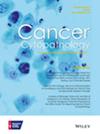Fine-needle aspiration cytology (FNAC) has been used as the first line approach to lymphadenopathy, which is a common presentation in pediatric age group. The Sydney system for reporting of lymph node (LN) cytology has been proposed to assess the reliability, performance, and accuracy of the aspiration procedure. This study intends to assess the role of FNAC in the pediatric population according to the Sydney system.
This was a retrospective observational study from a tertiary care center in Eastern India. All the patients in the age group of 0–18 years evaluated during years 2016–2024 were reclassified according to the Sydney system. Based on the cytology and histology diagnoses, the cases were categorized into true-negative, true-positive, false-negative, and false-positive. The overall sensitivity, specificity, positive predictive value (PPV), negative predictive value (NPV), accuracy, and risk of malignancy (ROM) was calculated for each category.
Of 803 cases of pediatric LN-FNACs, 35 (4.35%) cases were reported as inadequate (L1), 689 (85.8%) cases as benign (L2), four (0.49%) cases as atypical cells of undetermined significance (L3), 22 cases as suspicious for malignancy (L4), and 53 (6.6%) cases as malignant (L5). The sensitivity, specificity, PPV, NPV, and accuracy was 72.34%, 98.48%, 97.14%, 83.33%, and 87.61%, respectively. The ROM was 16.67% for L2 and 100% for both L4 and L5 categories.
FNAC is a highly accurate and specific test for LN pathology, especially in the pediatric population. The incorporation of the Sydney system helps to achieve uniformity and reproducibility in LN cytology diagnosis.


